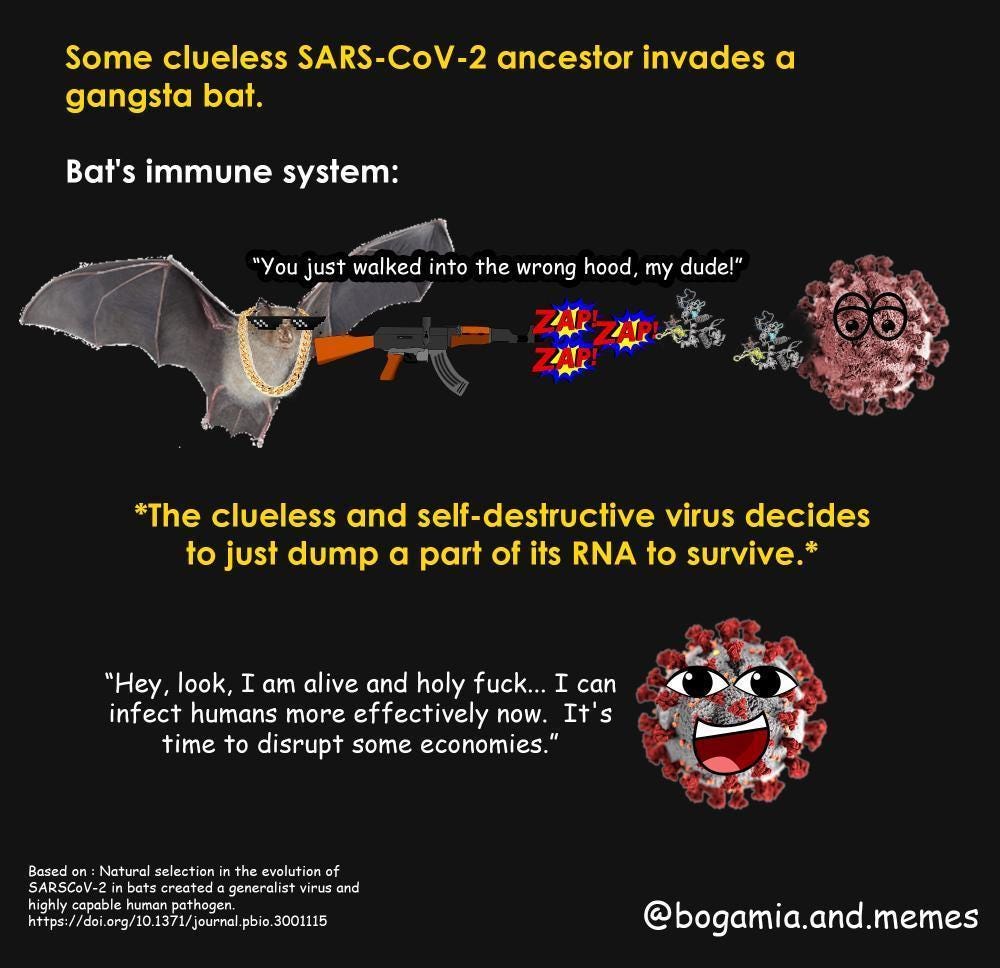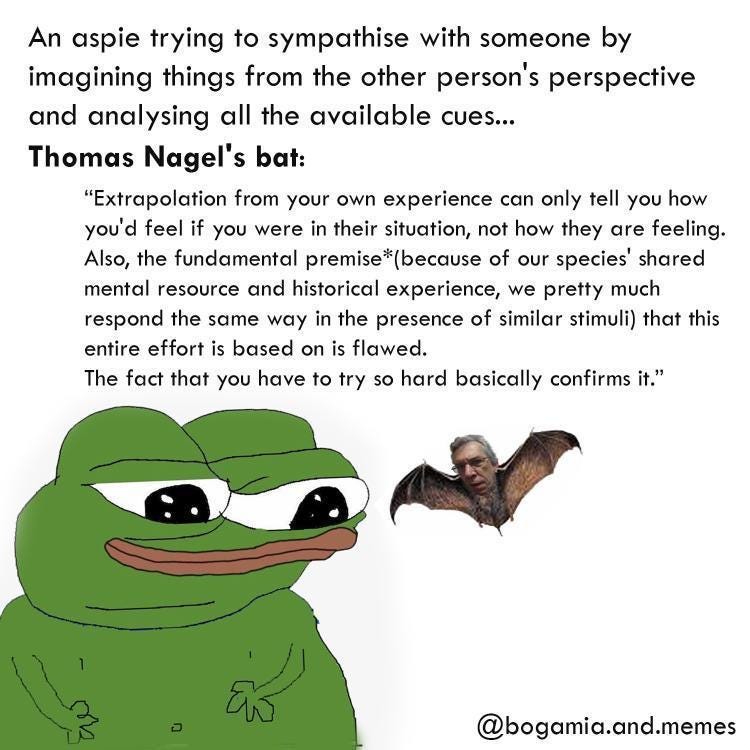I have long been obsessed with how the internet can function as an arbiter of culture. How it can make a sea shanty get two billion views1, or make a surprised dog become a multi-billion dollar asset2.
My obsession wasn’t theoretical, at first. During my university years, I was more than just a user; I was trying to build things online.
I co-modded one of the biggest meme groups on Facebook and was a regular contributor to humour sites like Cracked.com. I even ran my own niche pages on Reddit and Instagram, trying to build a small community around memes about science and philosophy.
It was an experiment, really, to see if Nietzschean nihilism could be deconstructed with a Swole Doge meme, or if the core tenets of fascism could be reverse-engineered into a Tom & Jerry cartoon. (The answer, disturbingly, is a qualified yes.)
And for a while, it worked. But the success felt like pure instinct. I simply had a feel for the rhythm of it—for the subtle difference between what would land and what would die in the scroll.
That instinct led me to create things I was once quite proud of. Below are a few examples, published under my old handle, ‘Bogamia and Memes’. Looking at them now, however, I see them a little differently.





My handle, ‘Bogamia’, was a nickname from my online friends, their slang for someone terminally ‘salty’ and ‘woke’. I suppose for a while, I leaned into it. You can probably still find more like these on Google and Reddit if you search for the name.
But ‘feel’ is no substitute for an explanation, and I have always needed to know why. What are the hidden mechanics that make an idea catch fire?
It’s a question that has pulled me through years of reading evolutionary psychology and behavioural biology. I’ve worked through the murky parts of the field, like the work of Satoshi Kanazawa, and spent hundreds of hours with the giants: Buss, Kenrick, Sapolsky, Miller, and Wright. The ideas have been slowly connecting in the back of my mind, but I’ve never had the chance to put them all in one place.
This post is my attempt to finally connect the dots and put those thoughts into words.
Here’s the plan for the rest of this post. I think it helps to lay out the entire argument in miniature. Everything that follows is essentially an unpacking of three foundational ideas:
The internet isn't a neutral playground; it’s a selective landscape that actively rewards certain cultural traits while letting others fade away.
Within this landscape, culture doesn’t just spread randomly; its diffusion is mediated by five overlapping biases: content, context, performance, ecological, and algorithmic.
Finally, and most importantly, these biases are neither arbitrary nor immutable; they ride on neural hardware we can map.
Let's start with that first idea: the internet as a selective landscape.
The Internet as a selective landscape
If you remember only one thing from this article, make it this: our cortex is still running on Stone-Age firmware3. It was calibrated to scan faces around a campfire, with social algorithms tuned for gossip and status negotiation within a tight-knit band of maybe fifty people4.
The network that brain plugs into today couldn’t be more alien.
Scale: Instead of fifty familiar faces, we have billions of strangers, weakly connected by pixels and posts.
Speed: Feedback comes in minutes, not moons.
Signal loss: Most of what makes human communication rich is stripped away online. The tone, posture, and micro-pauses are flattened into texts and emojis. Even audio and video are just higher-bandwidth simulations, not true presence. They offer a low-resolution copy of a person, filtered through a lens and stripped of other sensory data that comes from sharing a physical space5.
Algorithmic mediation: Every post is pre-filtered by an algorithmic mediator, an optimisation loop whose prime directive is to maximise watch time, not to find wisdom6.
When you put these four changes together (gigantic scale, breakneck speed, signal loss, and algorithmic bias), you don’t just get a new place to talk. You get a completely new fitness landscape.
This environment exerts a new set of evolutionary pressures on any idea trying to survive within it.
By the way, just so we’re on the same page, it’s worth stating plainly: ideas, too, face selection7. A meme, hashtag, or piece of slang is a packet of information whose value is determined by the strategy it enables—a vehicle for signalling your intelligence, sense of humour, or allegiance to a group. Like genetic information, these cultural packets face intense selection pressures on their ability to get replicated.
There are five of these pressures that matter most:
1. Cost collapses
The digital environment fundamentally rewrote the rules for cultural transmission. A near-zero cost for replication, combined with a frictionless environment for modification, creates the conditions for an explosive mutation rate.. Every recombination, edit, or out-of-context repost functions as a new variant in the memetic gene pool.8. This creates an ecosystem defined by an unprecedented volume of variation and noise.
2. Networks sprawl
An idea can now pump through communities that would never share a campfire. The social graph shifts from tightly-knit groups to vast ‘small-world’ overlays, allowing prestige and popularity cues to travel further and faster than ever before9.
3. Accelerated selection cycles
Selection no longer operates over generations; it runs on real-time analytics. The feedback loop between an idea’s launch and the social response collapses from years to minutes. This extreme speed allows early, often random, advantages to create path dependence lock-in, where a concept achieves dominance before our slower, more deliberate sense of epistemic vigilance can even kick in10.
4. Algorithms pick favourites
Engagement-maximising recommender systems act as powerful artificial selection coefficients. They are not neutral observers; they are active participants that grant bias-congruent artefacts a huge exogenous fitness boost11. An idea that aligns with our innate love for novelty or outrage gets pushed to the top of the feed, locking first-movers into incumbents in what amounts to a memetic founder effect.
5. Arousal outranks valence
In the attention economy, the emotional payload of a message becomes its most critical trait. High-arousal emotions like awe, outrage, humour, and moral zeal create content that hijacks our noradrenergic attention spikes. These super-normal stimuli, compressed into a single image or headline, consistently win the replication race12. Calm, nuanced, or low-arousal content, regardless of its truth or value, is simply out-competed.
What comes next
So, now that we have the landscape and the five brutal pressures that govern it, what this really means is that these pressures don't just select for certain kinds of content. Over time, they begin to select for certain kinds of minds.
They reward the ancient and deeply ingrained cognitive mechanisms we all use to navigate the social world, and in the next part, we will explore exactly what those mechanisms are.
Thank you so much for reading this far.
I’ve only recently started writing these ideas down publicly, and my main goal is to share things I find fascinating. If you enjoyed this piece, or if you have friends who you think might appreciate this kind of work, the most helpful thing you could do is share it.
I'd be hugely grateful for the help.
References
BBC News (2021) 'Nathan Evans' sea shanty Wellerman goes to number one in UK chart.' Available at: https://www.bbc.co.uk/news/entertainment-arts-56463078
BBC News (2018) 'Forget Bitcoin - now Dogecoin goes wild.' Available at: https://www.bbc.co.uk/news/business-42602038
Li, N.P., van Vugt, M. and Colarelli, S.M. (2018) 'The evolutionary mismatch hypothesis: Implications for psychological science', Current Directions in Psychological Science, 27(1), pp. 38–44. Available at: https://doi.org/10.1177/0963721417731378.
Dunbar, R.I.M. (1992) 'Neocortex size as a constraint on group size in primates', Journal of Human Evolution, 22(6), pp. 469–493. Available at: https://doi.org/10.1016/0047-2484(92)90081-J.
Kruger, J., Epley, N., Parker, J. and Ng, Z.W. (2005) 'Egocentrism over e-mail: Can we communicate as well as we think?', Journal of Personality and Social Psychology, 89(6), pp. 925–936. Available at: https://doi.org/10.1037/0022-3514.89.6.925.
Huszár, F., Ktena, S.I., O'Brien, C., Belli, L., Schlaikjer, A. and Hardt, M. (2022) 'Algorithmic amplification of politics on Twitter', Proceedings of the National Academy of Sciences, 119(1), e2025334119. Available at: https://doi.org/10.1073/pnas.2025334119.
Dawkins, R. (1976) The Selfish Gene. Oxford: Oxford University Press.
Dawkins, R. (1976) The Selfish Gene. Oxford: Oxford University Press.
Centola, D. (2010) 'The spread of behavior in an online social network experiment', Science, 329(5996), pp. 1194–1197. Available at: https://doi.org/10.1126/science.1185231.
Salganik, M.J., Dodds, P.S. and Watts, D.J. (2006) 'Experimental study of inequality and unpredictability in an artificial cultural market', Science, 311(5762), pp. 854–856. Available at: https://doi.org/10.1126/science.1121066.
Huszár, F., Ktena, S.I., O'Brien, C., Belli, L., Schlaikjer, A. and Hardt, M. (2022) 'Algorithmic amplification of politics on Twitter', Proceedings of the National Academy of Sciences, 119(1), e2025334119. Available at: https://doi.org/10.1073/pnas.2025334119.
Berger, J. and Milkman, K.L. (2012) 'What makes online content viral?', Journal of Marketing Research, 49(2), pp. 192–205. Available at: https://doi.org/10.1509/jmr.10.0353.




One of the best reads I've read this month, great job!